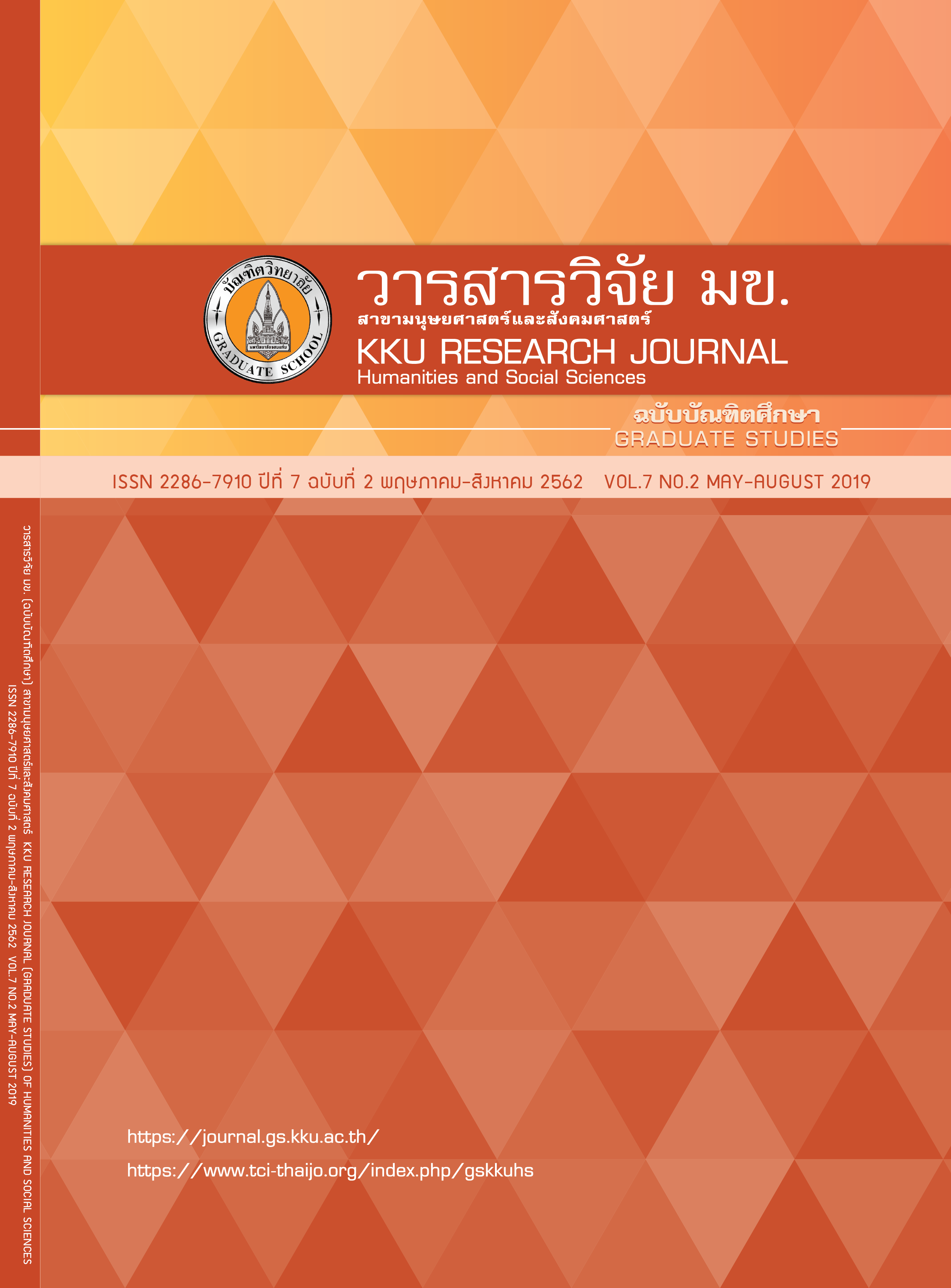Development of Teaching Music Model Based on Brain-based Learning for Secondary Demonstration School Khon Kaen University
Keywords:
Brain-Based Learning, The teaching method of musicAbstract
The purposes of this research were to: develop the teaching method of music using the brain as a base, Brain-Based Learning (BBL), conducted at Khon Kaen University Demonstration School. The target group consisted of 35 students in Matthayom 1/2 at Demonstration School, Faculty of Education, Khon Kaen University. The evaluation and development of the learning activities were based on the brain. And this was taken to expand the results with 40 students in Matthayom 1/1 at Modindaeng Demonstration School of Khon Kaen University. The data collection instruments consisted of 6 brainstorming lesson plans in 10 learning periods. The data was analyzed using the average as well as the Standard Deviation (S.D.). The research unveiled that: The development of the Brain-Based Learning (BBL) led to the assumption that the 6 instructional plans were very appropriate for the evaluation of the 3 experts’ appropriateness with the average at 4.49 and the activities as follows: Step 1, Brain Stimulation step 2, Learning Together step 3, Introduction to Knowledge step 4, Skill Training step 5, Exchange of Learning step 6, Summary of Knowledge
References
of Students in the 21st Century Bangkok: The Fresh Foundation Sri-Saritwong.
2. Ministry of Education. (2008). Core Curriculum for Basic Education BE 2551.
Bangkok: Agricultural Cooperative Federation of Thailand.
3. Narutit Sutjit. (2012). Music Education Principles and Essentials. No. 9.
Bangkok: Chulalongkorn University Press.
4. Kathryn, A. (2011). Music learning and teaching during childhood. The Oxford
Handbook of music education volume1. (p.318-321). Oxford University.
5. Virakorn Thanakitkum (2015) Problems and Development Guidelines for Secondary
Music Education in Demonstration School Master Thesis (from: the Graduate School of
KU and KU library) Music Education College Khon Kaen University
6. Kittisak Planngaam. (2018).To the teacher to the researcher. Classroom
Research (Research on Single Page) 19 April 2018, from
https://etraining2012.wordpress.com.
7. Aree Salavavee. (2007). Theories of brain learning for parents, teachers
and administrators. Bangkok: mitsomphun.
8. Issra Shankakorn, Sumalee Chaiyacharoen et al. (2008). Brain Learning
Potential Research Report Khonkaen University
9. Vittayakorn Changtagun. (2005). Use the brain effectively. Bangkok:
Amarin Printing and Publishing Co., Ltd.
10. Lekha Maksung. (2013) Effects of Brain – based Learning Management
on Creative Writing Ability in Thai Language of Grade 3 Students,
Banthungnaree School, Pa Bon District, Phatthalung Province .
Master of Education
11. Bureau of Academic and Educational Standards. (2010). Management of
curriculum based on Core Curriculum, Basic Education Curriculum, BE 2551.
Bangkok: 2nd edition, Printing House. Agricultural Cooperative Ltd.,
12. Prapansak Poomin. (2015) Theory of Teaching Music. November 26,
2558, from https://suppavit014.wordpress.com/ Music Teaching Theory
13. Kovit Pravanapruek (2010). Learning to develop the maximum brain.
Bangkok: Institute of Academic Developent (IAD.)
14. Yawnvapar Dachakhup. (2005). Brain education and learning,
Journal of Early Childhood Education. 9 (4): October



